
Nano Futures
Scope & Guideline
Advancing Nanotechnology for a Sustainable Future
Introduction
Aims and Scopes
- Nanomaterials Synthesis and Characterization:
The journal covers a wide array of methodologies for synthesizing nanomaterials, including chemical, physical, and biological methods. It also emphasizes advanced characterization techniques that provide insights into the structural, optical, and electronic properties of nanomaterials. - Nanoelectronics and Quantum Computing:
Research focusing on the integration of nanomaterials in electronic devices and quantum computing applications is a significant aspect of the journal. This includes the development of novel materials for transistors, sensors, and quantum bits. - Nanomedicine and Biomedical Applications:
The application of nanotechnology in medicine, particularly for drug delivery, diagnostics, and therapeutic agents, is a core area. The journal highlights innovative nano-formulations and their biological interactions. - Energy and Environmental Applications:
The journal emphasizes the role of nanomaterials in energy conversion and storage, including photocatalysis, batteries, and supercapacitors, as well as their applications in environmental remediation. - Emerging Technologies and Applications:
It explores cutting-edge research in emerging fields such as flexible electronics, wearable devices, and nanotechnology-based solutions for various industrial challenges.
Trending and Emerging
- Sustainable and Green Nanotechnology:
Research focusing on environmentally friendly synthesis methods and applications of nanomaterials for sustainability is gaining traction. This includes the conversion of CO2 into useful materials and biodegradable nanocomposites. - Integration of AI and Machine Learning:
There is an increasing trend towards utilizing artificial intelligence and machine learning in the design, synthesis, and characterization of nanomaterials, enabling more efficient and innovative approaches. - Advanced Nanocomposites and Hybrid Materials:
The development of multifunctional nanocomposites that combine various nanomaterials to enhance performance in applications such as catalysis, sensing, and energy storage is emerging as a significant area of focus. - Quantum Technologies and Information Processing:
Research into the application of nanomaterials in quantum computing and information processing is on the rise, reflecting the growing interest in leveraging nanoscale phenomena for next-generation technologies. - Wearable and Flexible Electronics:
There is a notable increase in studies related to the development of wearable and flexible electronic devices that utilize advanced nanomaterials, highlighting the trend towards integrating technology into everyday life.
Declining or Waning
- Traditional Material Science Approaches:
Research that focuses solely on conventional material science techniques without integration of nanotechnology is becoming less prevalent. The journal is moving towards more innovative and interdisciplinary approaches. - Basic Theoretical Studies:
There has been a noticeable decrease in purely theoretical studies that do not include experimental validation or practical applications. The emphasis is now on research that bridges theory and practical applications in nanotechnology. - Nanomaterials for Conventional Applications:
The use of nanomaterials in traditional applications without novel advancements or improvements is waning. The journal seeks to highlight groundbreaking uses and developments rather than established uses.
Similar Journals
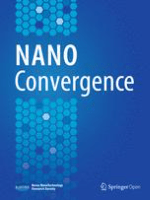
Nano Convergence
Empowering researchers with open access to cutting-edge discoveries.Nano Convergence is a premier open access journal dedicated to the rapidly evolving fields of nanotechnology, materials science, and engineering. Published by SPRINGER, this journal has been at the forefront of interdisciplinary research since its inception in 2014, and is set to continue its journey until 2024. With an impressive impact factor and recognition as Q1 in both Engineering (miscellaneous) and Materials Science (miscellaneous) categories, Nano Convergence ranks among the top publications, listed as Rank #8 out of 307 in General Engineering and Rank #34 out of 463 in General Materials Science according to Scopus metrics. This journal provides a platform for researchers, professionals, and students to share pioneering studies that converge different disciplines within nanotechnology. With its commitment to open access, Nano Convergence ensures that cutting-edge research is readily available to the global community, fostering innovation and collaborative advancements in the field.

Journal of Nanoelectronics and Optoelectronics
Innovating Tomorrow's Technologies TodayJournal of Nanoelectronics and Optoelectronics is a premier peer-reviewed journal published by AMER SCIENTIFIC PUBLISHERS that showcases cutting-edge research in the fields of electrical engineering, nanoelectronics, and optoelectronic materials. Established in 2006 and spanning through to 2017, this journal provides a platform for scientists and engineers to share their latest findings, developments, and innovations. Although coverage has been discontinued in Scopus, it retains an regional impact within its field, ranking #388 out of 654 in Electrical and Electronic Engineering and #156 out of 219 in Electronic, Optical, and Magnetic Materials. The journal is crucial for those seeking to advance their knowledge in nanoscale electronic components and optoelectronic devices, making it an essential resource for researchers, professionals, and students committed to this dynamic area of study. While the journal is not open access, it remains a significant contributor to the scholarly discourse surrounding next-generation electronic technologies and materials.
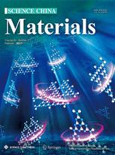
Science China-Materials
Unveiling Breakthroughs in Material Development.Science China-Materials is an esteemed peer-reviewed journal dedicated to advancing the field of materials science, published by SCIENCE PRESS. With a strong focus on innovative research and applications, this journal provides an essential platform for disseminating groundbreaking findings in materials development, characterization, and engineering. Since its inception, Science China-Materials has achieved an impressive Q1 ranking in the Materials Science (miscellaneous) category, reflecting its commitment to quality and the impact of its publications, as indicated by its 86th percentile ranking in Scopus. The journal is set to converge its contributions from 2016 to 2024, making it a vital resource for researchers and professionals interested in the latest advancements and trends in materials science. As an open access publication, it ensures that knowledge is freely available to a global audience, promoting collaboration and innovation across disciplines. The journal is headquartered in Beijing, China, and continues to attract high-quality submissions from leading experts in the field.

JOURNAL OF INORGANIC MATERIALS
Fostering Collaboration in Inorganic ChemistryJOURNAL OF INORGANIC MATERIALS, published by SCIENCE PRESS, is a prominent platform dedicated to the dissemination of research in the fields of inorganic chemistry and materials science. With a history spanning over three decades since its inception in 1993, this journal has become a key resource for academics and industry professionals alike, aiming to advance the understanding of inorganic materials through rigorous research findings. It operates under a strict peer-review process, ensuring high-quality contributions that uphold its reputation within the scientific community. Currently ranking in the Q3 category for both inorganic chemistry and miscellaneous materials science, the journal holds a significant position in Scopus rankings, further solidifying its relevance and impact. Researchers will find this journal an essential avenue for the latest discoveries and methodologies in inorganic materials, fostering innovation and collaboration in a vital area of science.
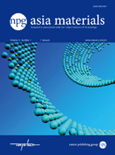
NPG Asia Materials
Exploring Innovative Pathways in Material ResearchNPG Asia Materials, a premier journal published by NATURE PORTFOLIO, stands at the forefront of research in the fields of condensed matter physics, materials science, and modeling and simulation. With an impressive Impact Factor gracing its Q1 rankings in 2023, this open-access journal, established in 2012, offers a vital platform for disseminating high-quality research articles, reviews, and perspectives that advance the understanding of material properties and innovative applications. Based in the United States and catering to a global audience, NPG Asia Materials features cutting-edge contributions that not only enhance academic scholarship but also provoke discussions relevant to both industry and academia. Researchers, professionals, and students are invited to explore its extensive archive of work, covering insights from 2009 to 2024, in a bid to stay abreast of the latest developments in these rapidly evolving scientific domains.
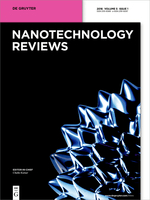
Nanotechnology Reviews
Pioneering Research in NanotechnologyNanotechnology Reviews, published by DE GRUYTER POLAND SP Z O O, stands at the forefront of the multidisciplinary field of nanoscience and nanotechnology. With an Open Access model adopted since 2019, this journal, identifiable by its ISSN 2191-9089 and E-ISSN 2191-9097, disseminates vital research that is accessible to a global audience. The journal is located in Germany and has established itself as a premier platform for innovative research, boasting impressive quartile rankings: Q1 across several categories including Biotechnology, Energy Engineering, and Materials Science, as well as a Q2 classification in Biomaterials as of 2023. The diverse scope enables authors to contribute to a range of topics, from biomedical applications to energy solutions and advanced materials, making it essential reading for researchers, professionals, and students passionate about cutting-edge developments. Additionally, with Scopus rankings highlighting its value across various domains and robust percentiles, including 94 in Engineering (miscellaneous), 93 in Medicine (miscellaneous), and 88 in Biotechnology, Nanotechnology Reviews is an influential and respected journal that fosters scientific dialogue and innovation.
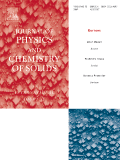
JOURNAL OF PHYSICS AND CHEMISTRY OF SOLIDS
Catalyzing Innovation in Condensed Matter ScienceJOURNAL OF PHYSICS AND CHEMISTRY OF SOLIDS, published by Pergamon-Elsevier Science Ltd, is a distinguished international journal that has been at the forefront of disseminating cutting-edge research in the fields of physics, chemistry, and materials science since its inception in 1956. This journal, which is recognized for its high impact in the Q2 category across multiple subjects—including Chemistry (miscellaneous), Condensed Matter Physics, and Materials Science—serves as a vital platform for researchers, professionals, and students to engage with significant advances in solid-state physics and chemistry. With Scopus rankings placing it in the top 15% of its field across various domains, the journal plays a crucial role in shaping the scientific dialogue surrounding materials properties, synthesis, and applications. Although it does not currently offer open access options, the presented research is widely recognized for its quality and relevance, ensuring that published works contribute meaningfully to ongoing scholarly discussions.

Materials Chemistry Frontiers
Bridging Science and Innovation in Materials ChemistryMaterials Chemistry Frontiers, published by the esteemed Royal Society of Chemistry, stands as a leading journal in the realm of materials science and chemistry, with an impressive Q1 ranking in both Materials Chemistry and Materials Science categories as of 2023. This open-access journal, operating from the United Kingdom, offers a platform for researchers, professionals, and students to disseminate high-quality, impactful research. With its E-ISSN 2052-1537, the journal is dedicated to publishing cutting-edge articles, reviews, and research communications that explore innovative materials and their applications, fostering a comprehensive understanding of the complex interplay between materials and their chemical properties. With consistent rankings in the Scopus metrics, being positioned at the 25th percentile among 317 in the Materials Chemistry category, it highlights its pivotal role in advancing the field. The journal thrives on contributions that broaden the scope of knowledge from 2017 to 2024 and beyond, solidifying its status as an essential resource for contemporary research in materials science.

JOURNAL OF ELECTRONIC MATERIALS
Elevating Knowledge in Condensed Matter Physics and BeyondWelcome to the Journal of Electronic Materials, a premier publication in the field of materials science. Published by Springer, this esteemed journal has been a beacon for groundbreaking research in electronic, optical, and magnetic materials since its inception in 1972. As an established resource, it boasts a commendable impact factor and categorically ranks in the second quartile (Q2) in key areas such as Condensed Matter Physics and Electrical and Electronic Engineering, as well as holding a respectable third quartile ranking in fields related to Electronic, Optical, and Magnetic Materials and Materials Chemistry. Researchers, professionals, and students can access a wealth of knowledge as we publish original articles, reviews, and cutting-edge research that push the boundaries of science and technology in these critical fields. Stay informed and engaged as we explore advancements that shape the future of electronic materials.

Beilstein Journal of Nanotechnology
Advancing the frontiers of nanotechnology research.The Beilstein Journal of Nanotechnology is a prominent open access journal published by the Beilstein Institute that has been at the forefront of nanotechnology research since its inception in 2010. With a focus on cutting-edge developments in areas such as Electrical and Electronic Engineering, Materials Science, and Physics and Astronomy, this journal is ranked in the Q2 category across multiple scientific disciplines, reflecting its significant impact within the research community. The journal is accessible to a global audience and aims to foster innovation and application of nanotechnology across various fields. Featuring a rich convergence of interdisciplinary studies, the Beilstein Journal of Nanotechnology offers a platform for researchers to share their findings, thus advancing the frontiers of knowledge in this dynamic field. With publishers based in Frankfurt am Main, Germany, it continues to contribute to the scientific dialogue on nanoscience and its practical applications, making it an essential resource for academics, professionals, and students eager to stay at the cutting edge of technology.